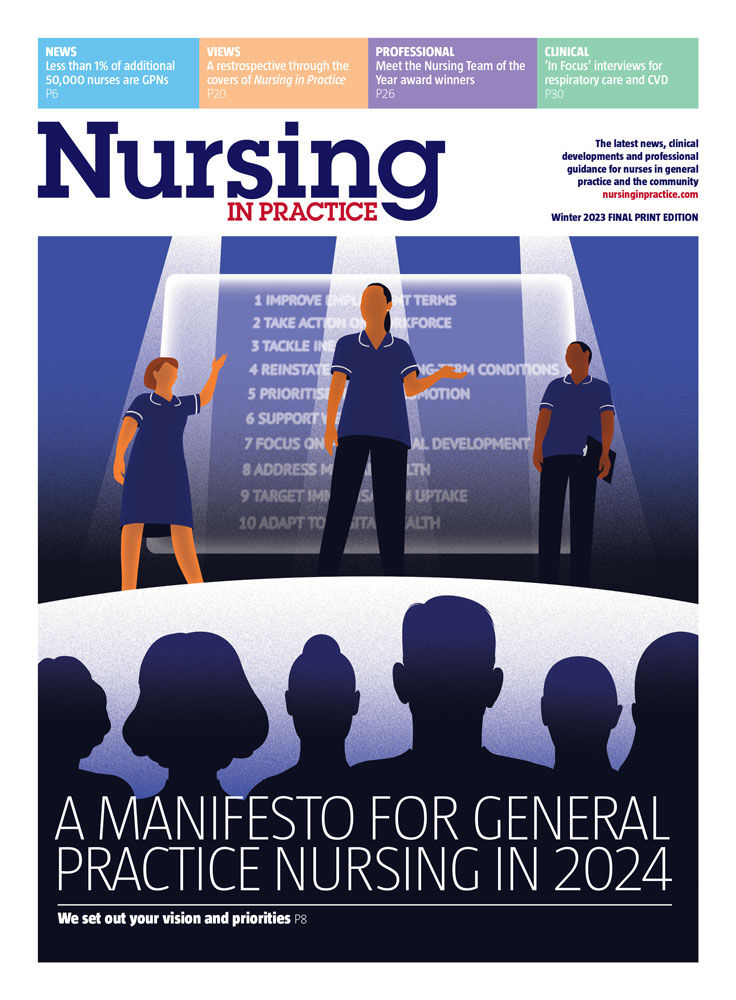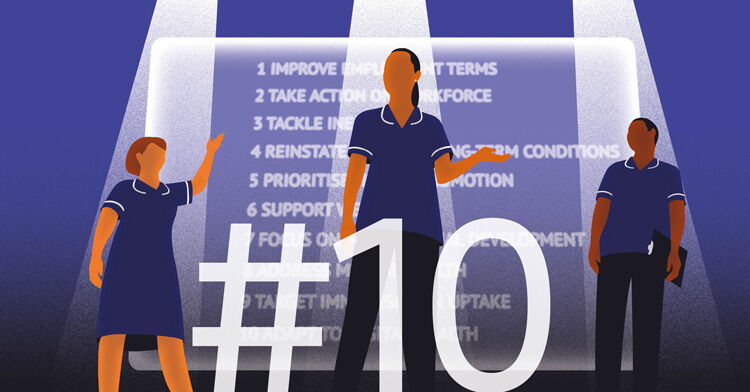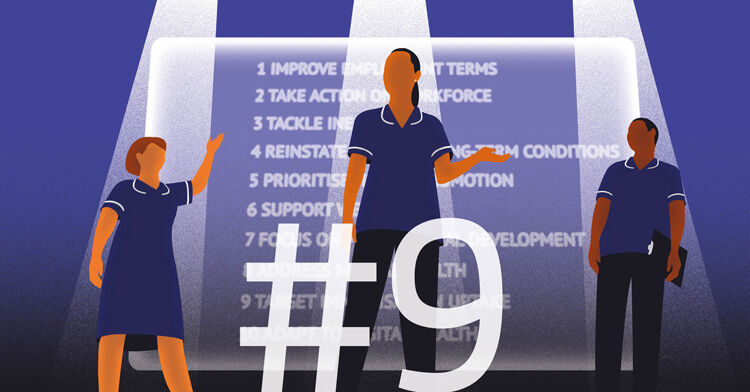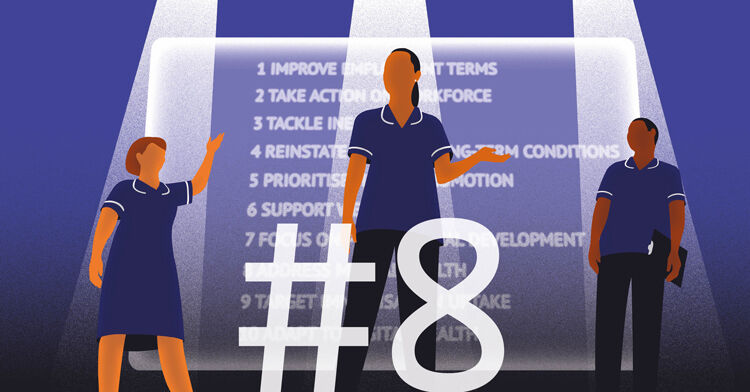As the training for nursing associates kicks off in December, Alice Harrold explores what the rest of the profession thinks of the new role.
Nursing associates (NAs) are the newest addition to the nursing workforce. First introduced by the Under-Secretary of State for Care Quality Ben Gunner MP in December last year, the new role was hailed by Health Education England (HEE) as a way of ‘bridging the gap’ between health and care support workers as well as helping to build the ‘capacity and capability’ of the health and social care workforce.
And the Government will see its plans put into action in the next few months, as 1,000 trainees are selected to begin their two-year programme at 11 test sites across England in January, with a further 1,000 students beginning their course in April.
But there is still confusion around what the role will involve and how nurses will be affected, with fears that NAs are simply being used as a cheap way of filling the gaps in the nursing workforce.
The aim is for NAs to assist registered nurses by taking on their more routine tasks across different settings, including GP practices, hospitals, hospices and care homes.
They’ll be responsible for seeing and treating patients and administering medications including controlled drugs, while working under the direction of the registered nurse without direct supervision.
HEE says this will allow nurses to better concentrate on patient care and treatment. But nurses have raised concerns that NAs in busy workplaces will gradually be asked to take on more and more nursing duties to make up for a lack of staff, despite the fact that they will not be trained or paid to do so.
“Patients should not be asked to pay the price of receiving care from a less skilled and less educated member of staff, just to make up for the failure of the system to ensure enough registered nurses,” says researcher and lecturer in nursing science Jane Ball, from the University of Southampton.
Marilyn Eveleigh, nurse advisor and an independent trainer in East Sussex, says that the workforce undoubtedly needs help but questions whether the Government is seeing the new role as a “quick fix”.
“We are haemorrhaging nurses, but I’m not sure that this is the answer,” she tells Nursing in Practice.
“Nurses in training are concerned. They’re wondering about their status and they are asking why they are bothering training to be a qualified nurse.
“Why are we developing another role when we need to work on retention? We have lots of qualified nurses out there who aren’t working as nurses. We should be putting resources into getting them back instead of creating new roles and paying agency nurses.
“I think HEE envisions this role as being qualified more quickly and more open to a wider range of society. But it’s not going to be a quick fix if we don’t have enough nurses to supervise them.”
Unison has raised similar concerns, branding the introduction of NAs as “nurses on the cheap”.
Unison’s head of health Christina McAnea says: “These new roles could help improve the career prospects of existing healthcare assistants who already provide vital support to the NHS. But they should not be seen simply as another cheap alternative to registered nurses.
“There’s still a desperate need for more nurses and the Government must drop its foolhardy plan to scrap the student bursary. Ministers must also do all they can to give a leg-up to existing healthcare assistants so they can qualify as nurses and be paid accordingly.”
The NA role will offer a higher skillset than healthcare assistants but at a lower band and pay rate than nurses. If NAs qualify after two years at Band 4 as expected, their annual pay will be set between £19,217 and £22,458. This is higher than the Band 2 of healthcare assistants but lower than the Band 5 that registered nurses fall into after their three-year degree, meaning that they are paid between £21,909 and £28,462 a year.
HEE has stressed that the new role is not a substitute for registered nurses. And the Department of Health has repeated its commitment to training more nurses. This will ensure there are 23,000 more nurses available by the end of parliament, it says.
Following a six-week consultation that it held earlier this year to gather opinions on the role from the public, the workforce, students and employers, HEE says that the 1,384 respondents, including 666 nurses, on average saw the introduction of NAs positively, saying that it will have a major and positive impact on direct patient care.
Many also noted that it will provide a new pathway to becoming a nurse, which may encourage new recruitment.
However, there were still concerns raised relating to training and progression, roles, responsibilities and relationships, and workforce and financial issues. There was also wide support for the training to lead to a recognised national qualification in line with the pre-registration nursing standards.
“I am very concerned that this could be nursing on the cheap, which is never beneficial for the patients,” an anonymous nurse said.
Another respondent, who described themselves as a health and social care education provider, said: “It would mean that nurses would be tasked with more organisational and managerial responsibilities, taking them further away from clinical work.”
But Professor Lisa Bayliss Pratt, director of nursing and deputy director of education and quality at HEE says the consultation proved there is “real appetite” for the NA role. She says: “We firmly believe the NA role can provide a real benefit to the nursing workforce across a range of settings and play a key role in the delivery of patient care with safety at its heart.
“The role is neither a panacea for future workforce supply, or a substitute for increasing the supply of graduate registered nurses – and throughout the process we sought to reassure people that patient safety remains paramount and is a determining factor that underlines the role.”
Senior nurses have also called for the rest of the profession to embrace the new role, particularly now that the Government is pushing ahead with its plans.
“Registered nurses as leaders of care need to recognise the importance of our workforce at all levels and to invest in it,” says Professor Elizabeth Rosser, a registered nurse and deputy dean of education and professional practice at Bournemouth University.
“If we as the profession have accepted the NA through the consultation, we need to embrace the role, support our colleagues and, through collective leadership, empower our teams with the confidence to enhance the quality of care and to challenge appropriately.”
A national job description for NAs is still being developed with NHS Employers, according to HEE, to prevent variation in the scope of practice and ensure consistent pay scales.
And as the training kicks off in January, the rest of the profession will be waiting to see how the role develops, and how they will be affected.
“The key will be how it’s implemented,” says Teresa Chinn MBE, an agent nurse and founder of the @WeNurses Twitter handle. “The devil’s in the detail.
“At the end of the day, something has to change because we don’t have enough nurses out there. You wouldn’t ever want a role where people didn’t feel that they were welcomed or supported.
That would be a very tough position for the NA. “We have to create an environment where the nurses feel supported by the organisation and the NAs feel supported by the nurses.
“We will have to watch the test sites very carefully and see what we can learn from them to help with implementing the role moving forward. This comes down to absolutely every nurse. If we can take even one little piece of learning when we come across NAs in our own trusts and workplaces and implement it then perhaps we can make that transition a bit easier.”
This article was first published in Issue 93 of Nursing In Practice in November 2016.








